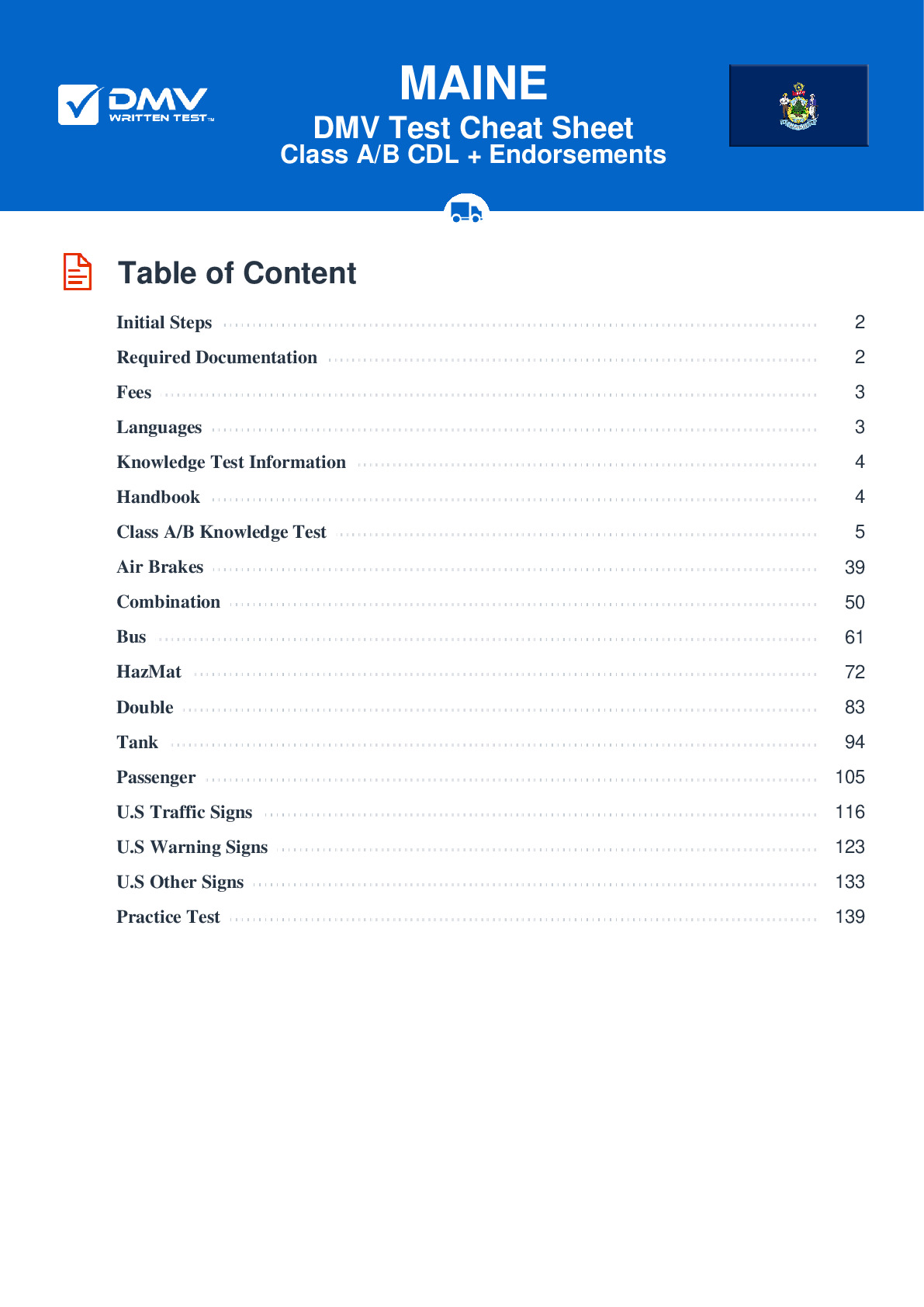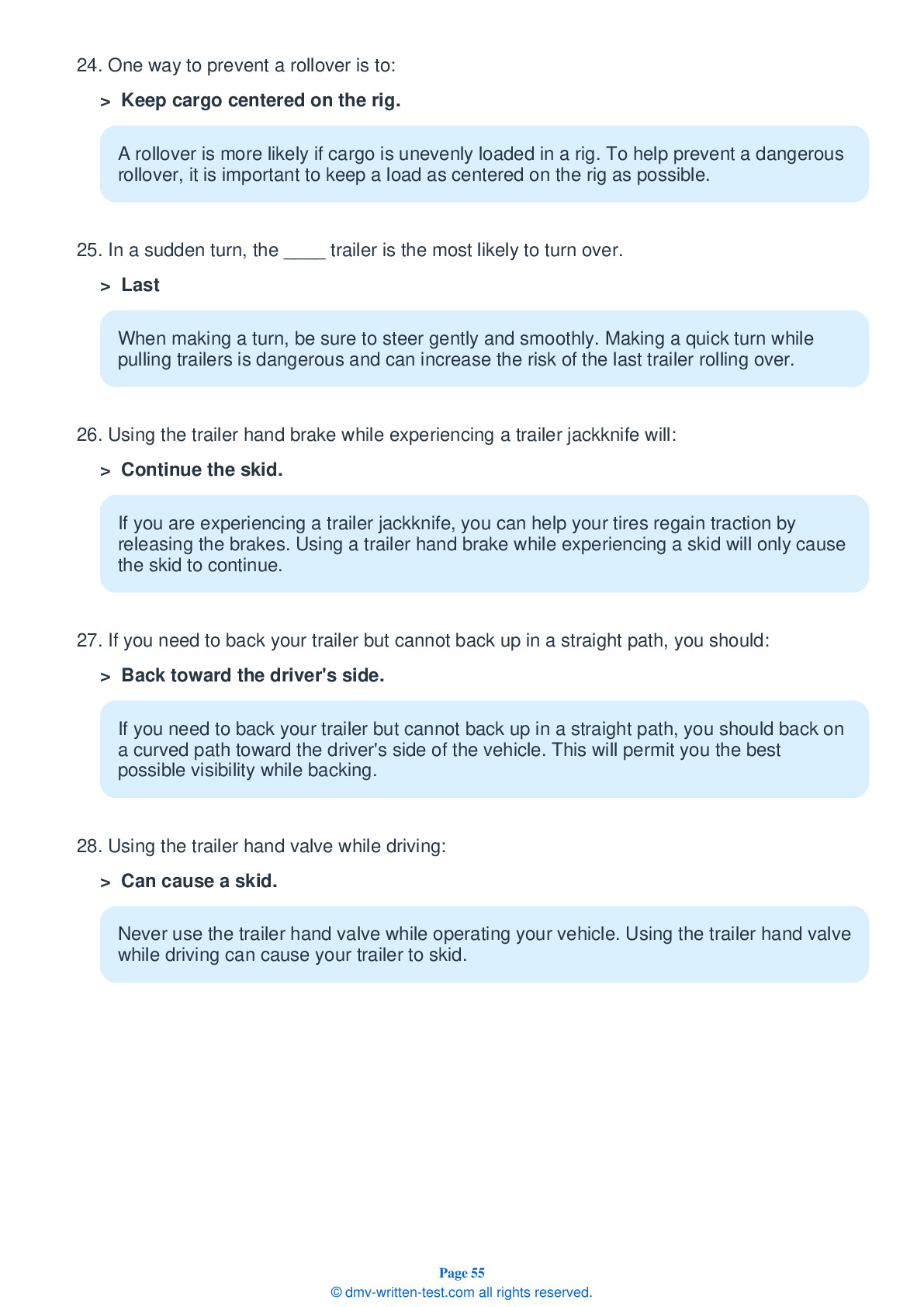Air Brakes
This endorsement is required for driving a vehicle with air brakes. To receive this endorsement, applicants must pass a written test. The test consists of 25 multiple choice questions. Each question has three answer choices. To pass, the applicant must answer at least 20 questions correctly. Test questions come from the Maine Commercial Driver License Manual. Questions come from the chapter covering: Air Brakes. The Air Brakes endorsement may be used with the Class A, B or C CDL.
Number of Question
Passing Score
1. How much distance will an air brake-equipped vehicle need to come to a complete stop if it is traveling at 55 mph under ideal driving conditions?
Explanation
A vehicle's total stopping distance is made up of perception distance, reaction distance, brake lag distance, and braking distance. With all of these factors included, an air brake-equipped vehicle traveling at a speed of 55 mph under ideal driving conditions will need approximately 450 feet to come to a complete stop.
2. Friction in an S-cam brake is caused when the brake shoes and linings:
Explanation
Friction inside a brake drum is caused when the brake shoes and linings push against the inside of the drum. The friction in the drums will slow and stop the vehicle.
3. Using the brakes creates heat. If too much heat is produced:
Explanation
Brakes are designed to take a lot of heat, but drivers should not rely solely on the brakes to slow their vehicle. Brakes may fade and lose their ability to slow down the vehicle if they become too hot, so drivers should also rely on the engine braking effect.
4. If the spring brakes are on, you should:
Explanation
Do not use the brake pedal when the spring brakes are on. This could damage the brakes by subjecting them to the combined forces of springs and air pressure.
5. What helps prevent wheel lockup when braking?
Explanation
The purpose of an Anti-Lock Braking System (ABS) is to prevent wheel lockup while brakes are being applied.
6. Why should you regularly drain the air tanks?
Explanation




